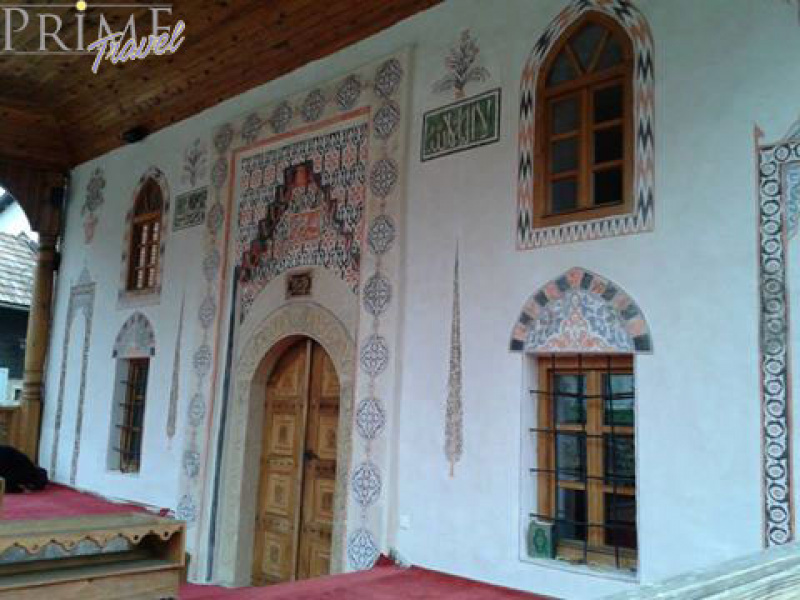
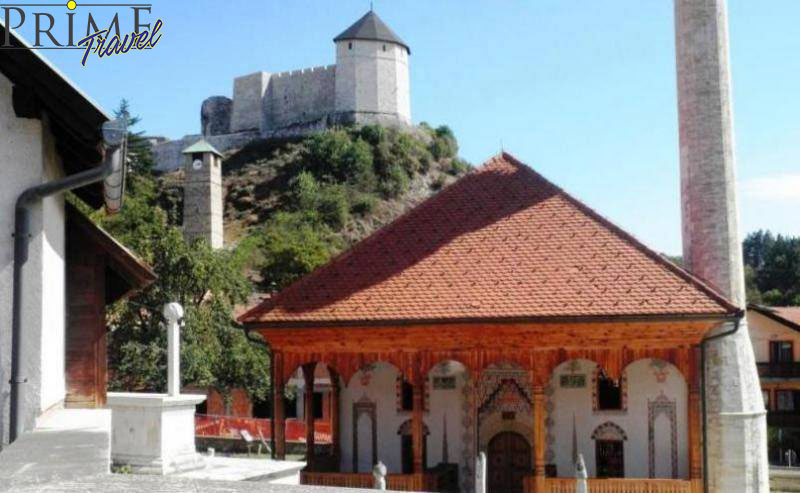
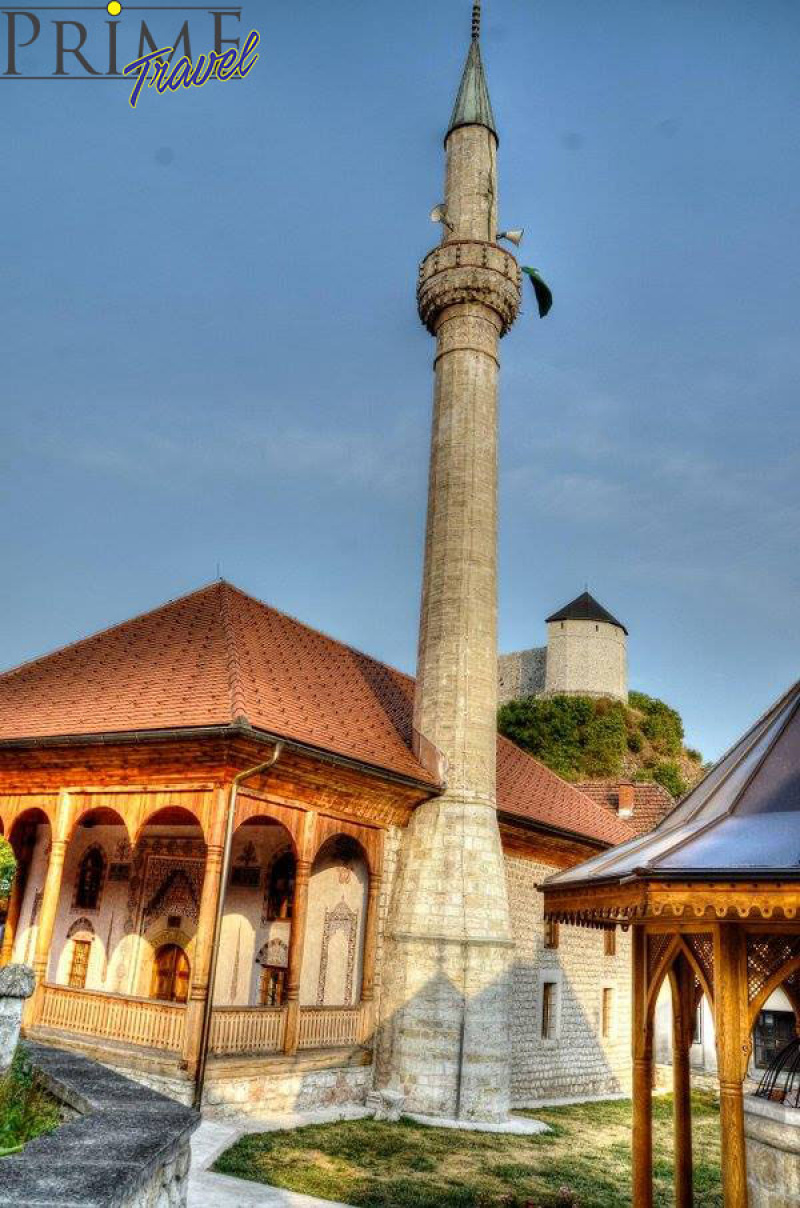
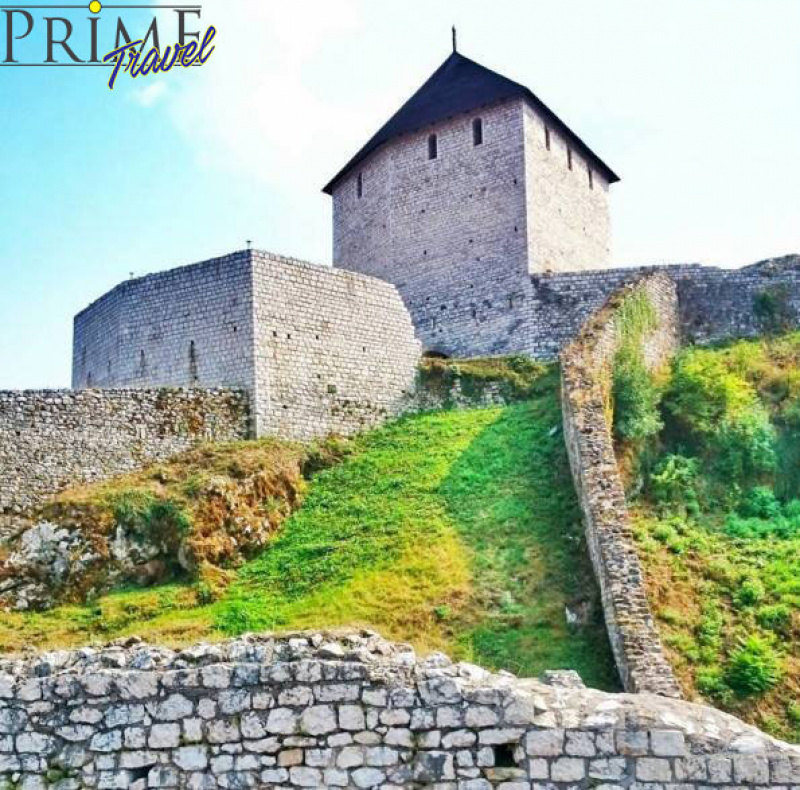
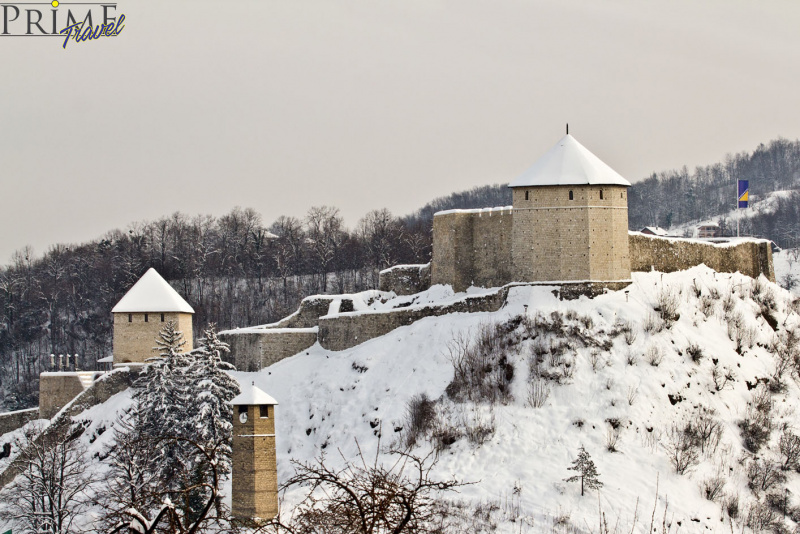
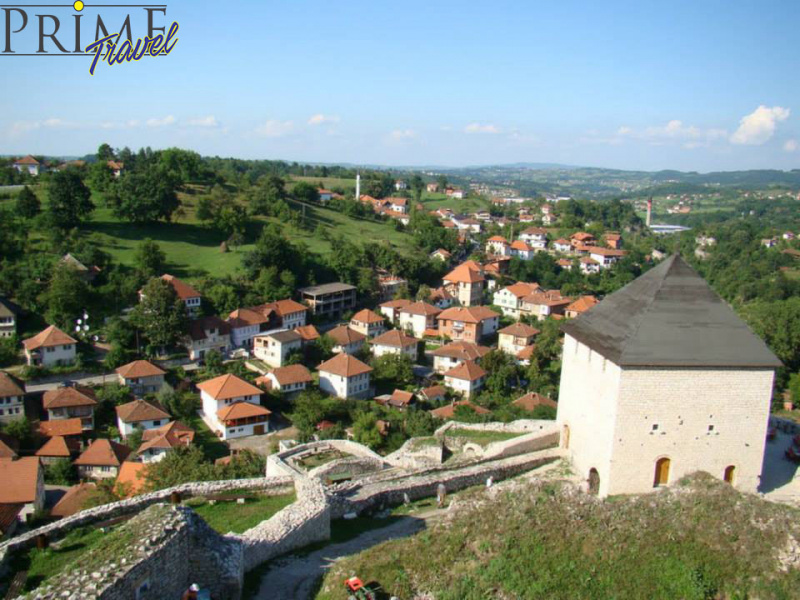
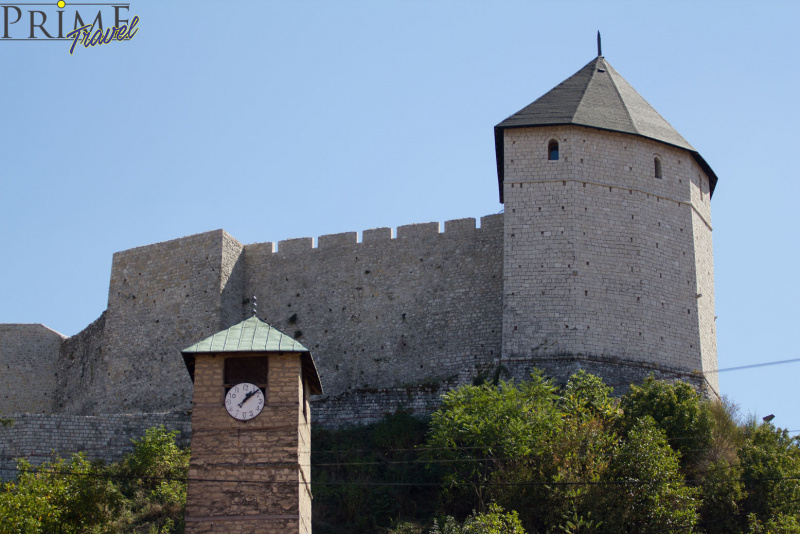
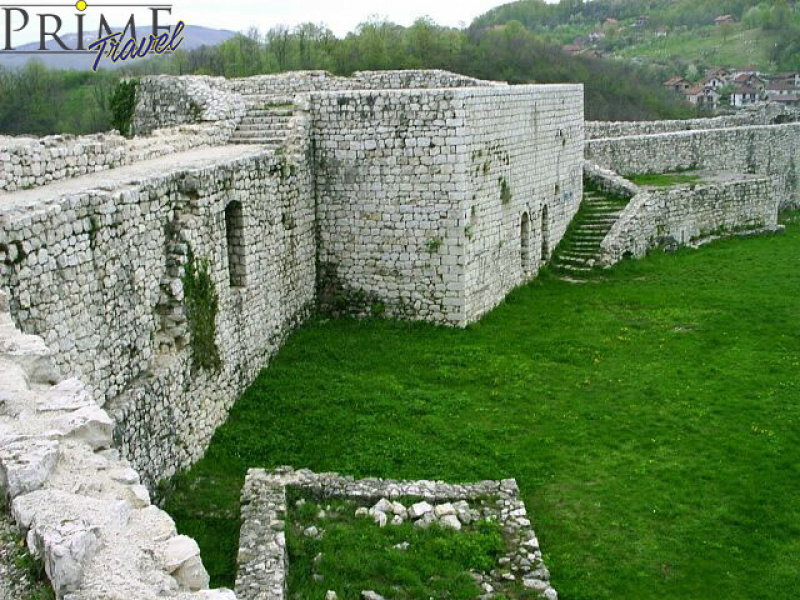
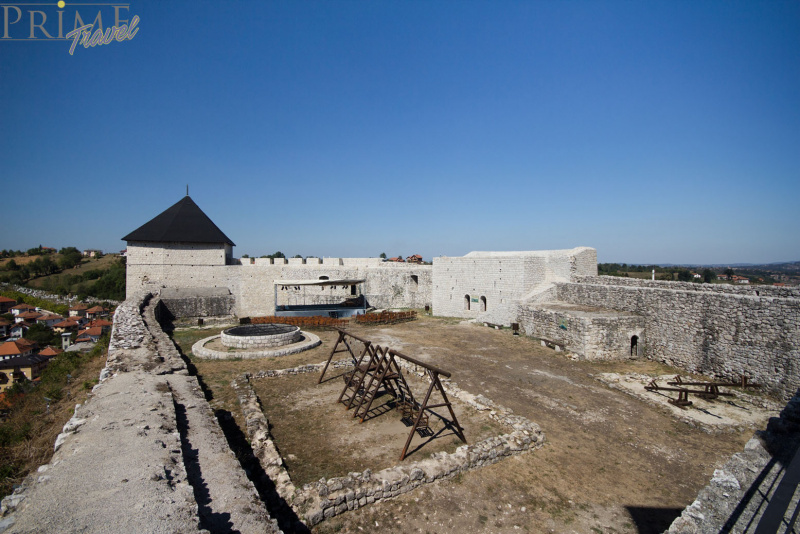
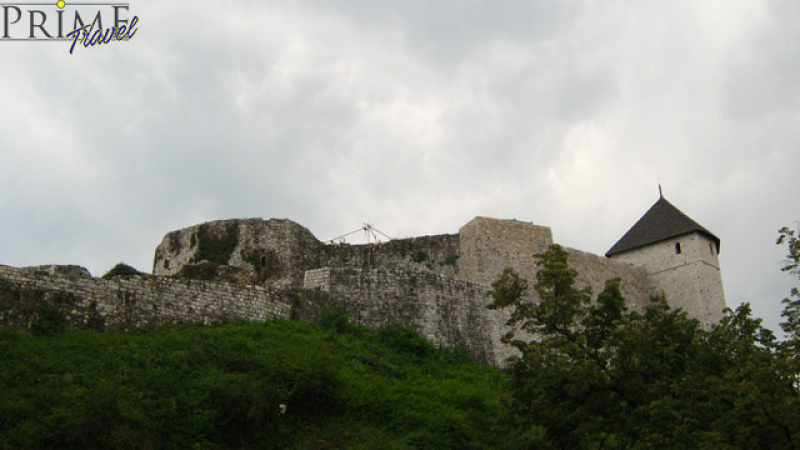
Price: Contact us
Under its present name Tesanj was first mentioned in 1461 in the Charter which King Stjepan Tomasevic among other things, gives "and the Usora town Tešanj" to his uncle Radivoj Krstic. The church of St. George was also mentioned in Tesanj. In 1465 years the Turks established the Bosnian kingdom whose capital was Tesanj. Matija Kotromanic was named for the king of Bosnian. Kingdom of Bosnia was a buffer state that was established and then abolished by the Turks. Tešanj will then be the center of the district, and later the Kadiluk compound of Tešanj, Maglaj and Doboj captaincy and towns Novi Seher.
As the borders of the Ottoman Empire been moved far to the north, Tesanj could live and prosper in peace. On the left side of the Usora River, on the slopes of Dubrava and Borja, Gazi Husrev-beg waqf was founded in 1531, together with villages Omanjska and Kuzmadanje (Komušina and Planje), ćehaja of this waqf became Gazi Ferhad-beg, son Iskenderov, nephew of Sultan Suleiman the Magnificent, who founded his waqf on the right Usora. And that Ferhad-Bey, who for the first time in historical documents was mentioned as a participant in the Battle of Mohács (1526), actually is the most important figure in the early development of Tesanj. He is the main architect of the Tešanj mosque (Čaršija or Ferhadija) which, according to the terms of the endowment, was built "for God's slaves who perform the prayer after idolatry".
Tesanj´s fortress
Tešanj´s fortress is one of the largest (6,296 square meters) and the most significant buildings of its kind in Bosina and Hercdegovina.
The exact time of its construction is unknown. It has long been built and rebuilt. Because of its location it was most used to defense against the enemy. With the market-place he makes one harmonious ambiance of the Bosnian style. Construction began in the time of the Illyrians. It was upgraded by the Romans, Slavs and Turks. During the Ottomans period Gradina had a permanent military crew.
Old Town Tešanj or Gradina was built on a hill in the valley, along the river Tešanjka, on a steep and partly closed-off cliff of the hill, difficult accessible from all three sides. By type of its purpose it belongs to a group of large, fortified city on a hill.
The fortified settlement from the medieval period was built on the top of a rocky hill. There is built a polygonal tower and fenced yard. The courtyard had an irregular semicircle with a radius of about 26 meters. On the north side of the courtyard a twelve corner tower was built, which is believed to have been high of 15 to 20 meters and had a ground floor and three floors. This tower was the main defense of the medieval town. Between the towers and today's truncated towers, in the wall of the courtyard was built a small bastion which is considered to have been a tower. In the courtyard were once built wooden residential buildings and a well that is now buried. It was buried by the Germans in World War II, after being thoroughly searched. Near the twelve corner tower a smaller seven corner tower was built. That was the original Tešanj Castle Middle Ages, which will change its appearance at the beginning of the fifteenth century and it turns from the medieval palace into a fortress. Then at the very edge of the hill, walls which closed the entire defense system were built. As for the technique of building a medieval town Tešanj, stone shell into which poured the porridge of crushed stone and lime mortar were used.
The Ottomans occupied the city in 1520 year, they probably found the city burned and demolished. At the end of the seventeenth century the Ottomans repaired the city. Then they added a new part to the city.
The strength of the city is characterized by renovated uptown, adapted to the modern way of fighting, and the lower part of the town from the Ottoman period, with his system complement the strength of the fortress.
The lower part of the city began to build during the period of Sultan Mustafa II (1695th to 1703rd). In the lower part of the town the Ottomans first built the Dizdar's tower. The tower had a ground floor and two floors. On the first floor was a larger room for living on the second floor was an apartment for dizdars. East of Dizdar's tower, the Ottomans built a bastion. Through the middle of this bastion a tunnel was dug, and right and left of him a casemates.
This fort got its final appearance which is representing one of the strongest fortresses of Bosnian eyalet. Upgrading the old town made by the Ottomans, and the construction of the lower town is the third (Ottoman) architectural phase. The military crew left the old town of Tesanj in 1840.
Ferhad-Bey's Mosque
Ferhad mosque in Tešanj was built between 1555 and 1558. The architect was Ferhad-beg, according to the written records, he was a closer relative of Sultan Suleiman the Magnificent, and according to some documents he was his sister's son. It is unclear why Ferhad beg is in Tesanj, but what is known is that he expanded Tesanj. He built a madrasah which worked in shorter interruptions until 1946.
He left 32 stores as waqf from whose income the mosque were maintained. By changing the system of government and the departure of Turkey, each system has robbed or nationalized stores, so that today there is not one of that shop from whose income would the mosque be supported.
Ferhad-Bey mosque was declared as a national monument of Bosnia and Herzegovina.